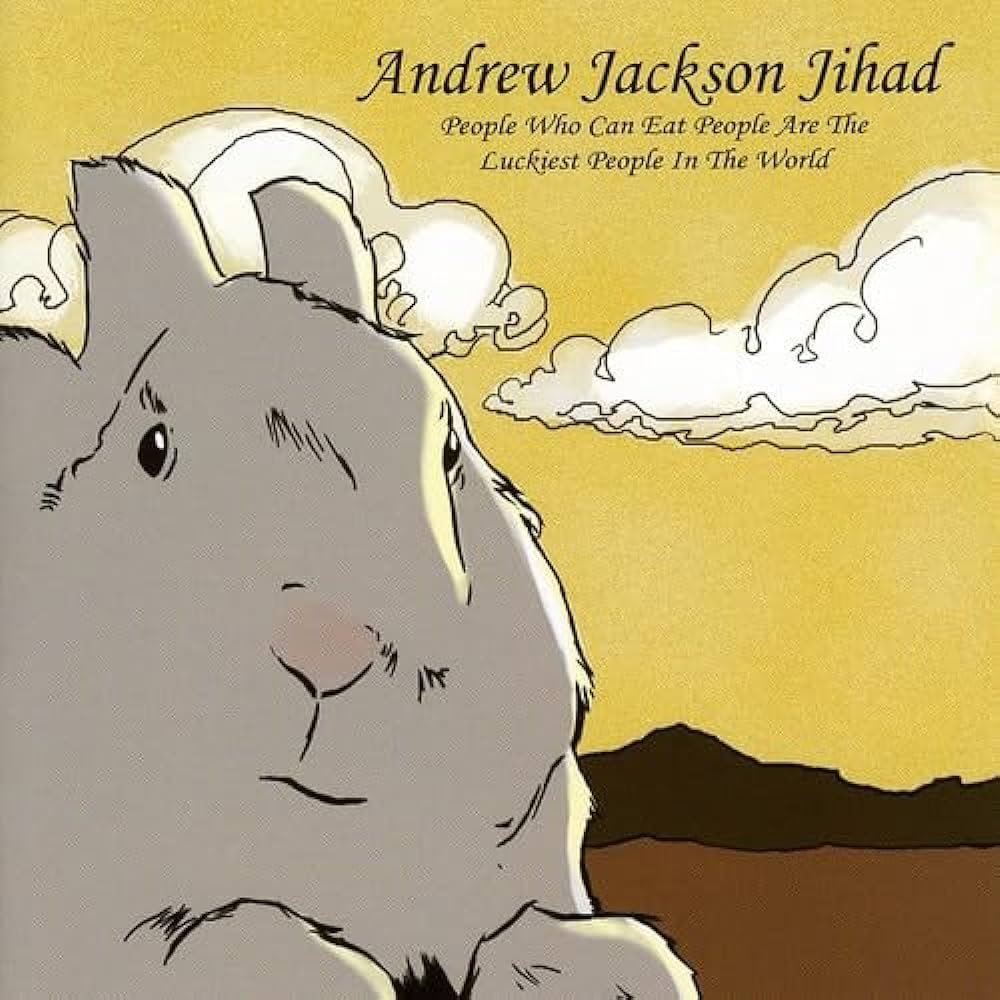A crash course on Anti-Folk.
An introduction to a blend of tradition and rebellion in the world of folk.
art by Taylor Pate.
Anti-war and pro-equality, the folk movement of the 60s gave artists an outlet to express discontent and rally voices against prominent issues of the time. Their music came with an air of seriousness, protesting what plagued our nation over acoustic strums and soothing vocals. Stagnancy breeds nothing, but thankfully with time comes change, and so innovation was born.
An evolution of genre, anti-folk is less concerned with global issues, and more so with those of the artist. If this change in subject was simply treated like the songs of the sixties, I’m sure the music would come off as narcissistic and self pitying. But besides new lyrical inspiration, this subgenre takes itself much less seriously, offering aspects of unpolished rawness and vulnerability. Leaving behind the struggle for change through music as a medium, anti-folk is more so a reflection of self, an introspective to the problems that make us human. To say this genre arose in the 21st century would be a lie as its been around for some time. However, the prominence of a few artists has given 2000s anti-folk a reputation that could be considered mainstream.
2007’s critically acclaimed film Juno puts the genre front and center, with major contributions to the soundtrack coming from Kimya Dawson and Adam Green. The two join together, becoming pillars for anti-folk as we know it. Serenading the world with endearing tracks of relatability, Dawson and Green deliver cheery highs and bleak lows on the topic of adolescence, highlighting insecurities we’ve all had at one point or another. Outside of their music for the film, both artists and their project The Moldy Peaches amplify these aspects of song to extremes, with beautiful tracks like Nothing Came Out, The Beer, and My Shadow Tags on Behind, illustrating the frustrations that come with living, depression, jealousy, and fear of obsoleteness. The combinations of tone, lyrics, pacing, and instrumentation provides these artists immense versatility, with a product of expression that ranges all emotions, providing comfort in any scenario.
Find yourself lost in the absurdity of the ever changing day-to-day life? Jeffrey Lewis makes music that seems to embody this feeling completely. Harboring his recollections of the past, complaints of the present, and fantasies of the future, his songs will leave you sympathetic and in a state of dejection and insecurity similar to the music he makes in his early career. The Last Time I Did Acid I Went Insane is a staple in the genre, mixing the style of Dawson and Green with soft and vulnerable vocals, cycling through songs of regrets and rejoice through obscure storytelling.
Even today, there exists a large field of music which can just be written off as “sadness porn:” a romanticization of anguish and despair. I can’t deny that most of this music isn’t self aware of its victimizing and needy tone, doing it’s absolute best to stand out in an area that is uber saturated with copies on copies to begin with. But for every replica there is an original, and for some duplicates, there are those that truly transmute original concepts and deserve recognition. The Mountain Goats have been producing projects since long before I was born, going back into the mid nineties. They’re an inspiration to countless aspiring artists hoping to create works that mesh the music they love. Although I wouldn’t fully classify them in the field of anti-folk, they run adjacent creating a variety of genre blending folk and punk, which has innovated the field for more than thirty years. Whether hopeful to despairing, bitter to compassionate, The Mountain Goats have given birth to countless notable projects and have influence that spreads far and wide.
When it comes to copies, they generally struggle to find innovation, delivering a diluted version of the blueprint. But when innovation is present or a group creates quality music that is comparable to their inspiration, a great band can be born. A prime example of this would be the group AJJ, taking inspiration from the likes of Dawson and The Mountain Goats. Riding the line between the hard to distinguish anti-folk and folk punk, AJJ employs a wide variety of sounds in their music, spanning harsh, loud, and bitter embodiments of frustration like Hate Rain on Me to heart wrenching ballads like Junkie Church and Free Bird, which encompass a slough of despondent topics. Drawing influence from pillars of the genre, AJJ masterfully crafts their own version of what could be considered anti-folk. At times, they employ a new spin through cynical, harsh sounds and lyrics, but fall in line at others, crafting masterfully done blueprint based tunes.
Anti-folk wasn’t built in a day, but from solid building groups and well crafted branches. Countless artists have contributed unique takes on the sound and concepts which embody the genre. Although each and every musician mentioned thus far is fantastic, I also have my own agenda and would like to highlight who I consider the best anti-folk group: Defiance, Ohio.
I don’t know if I would fully classify them as anti-folk, but this genre is not entirely distinguishable from surrounding fields of music, so who's to say they aren’t? Defiance, Ohio is a group that also borders this line between anti-folk and folk punk, creating music that all sounds similar. They don’t have the versatility produced by other artists, but for what range they do have, every single song is, in my eyes, incredible. They’re loud, harsh, sarcastic, bitter, and lyrically blunt, yet beautifully strung together. There’s a charm in their music that’s difficult to replicate, drawing me towards them any time I’m feeling down. Maybe it’s the fact that they don’t sing with a nonchalant tone or because they speak with frustration-filled determination, rather than resignation. Either way, Defiance, Ohio has a certain something that sets them apart from the rest for me. Generally, anti-folk is there to pat you on your back when you’re down, allowing for an environment of self pitying reflection. On the other hand, Defiance, Ohio wants you to stand up and act, move forward, and find some way to release your frustrations or rid yourself of it altogether. The harsh strumming and unique addition of instrumentation like violin is pulled together with a unique set of raspy yet sharp vocals, allowing Defiance, Ohio to put their own spin on the genre.
Anti-folk is quite a broad genre, and I won’t sit here and act like I’m an expert. I’ve covered what I consider to be the primary contributors, but there is just far too much to cover in a simple introduction. Although rough around the edges, anti-folk brings a charm and relatability different from that of the folk movement. If nobody’s got me, I know these artists will have a song that encapsulates what I’m feeling, and so it holds a dear place in my heart. I strongly encourage diving deeper into the genre, as there is truly innovative and fascinating music stemming from the sound known as anti-folk.
edited by Vikram Mahendru.
artwork by Taylor Pate.
album artwork believed to belong to either the publisher of the work or the artist.



